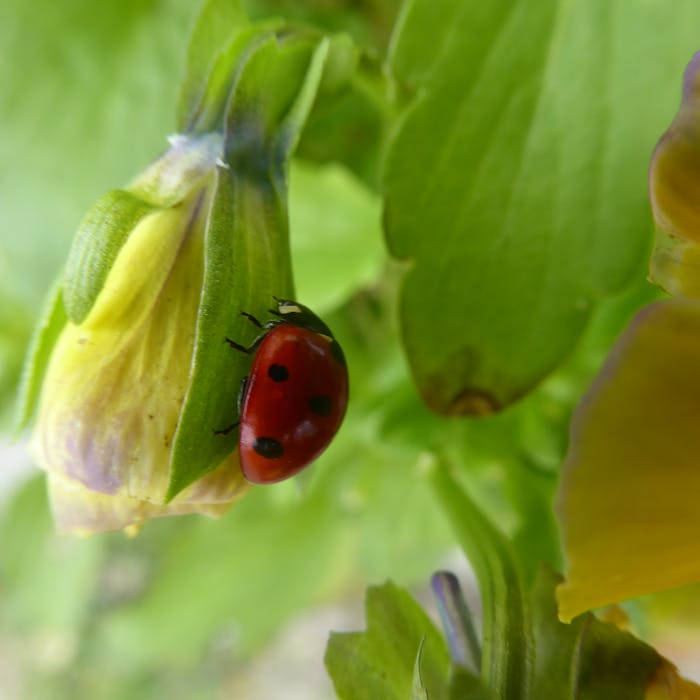
Britain's Ladybirds - regularly spotted and in multiple colours
There are 26 types of ladybird in the UK, many of which can be regularly spotted in gardens and woodland. Being spotted is the right word for seeing these small flying insects, as the familiar feature across the species is a range of coloured shell types with spots in numbers ranging from 2 to over 20.
The 7-spot ladybird is probably Britain's most recognisable species. It always has seven black spots on its red wing cases, and black legs. It is a small insect 5-8mm long, common and abundant across the UK. It will be found on plants where it can carry out its mission of being a voracious predator of aphids and an excellent natural pest controller for gardeners. In the winter, it may come indoors or live in dry, sheltered crevices such as beneath tree bark.
Also common os the 2-spot ladybird, even smaller than the 7-spot kind, and usually with just one spot on each wing case. It can sometimes be black with red spots.
Larger is the Harlequin ladybird, a non-native Asian species first spotted in the UK in the early 2000s, which comes in a variety of colours and spots. Some forms are black with red spots and others red with black spots. Their brown legs distinguish them from other similar-looking ladybirds. Some also have a distinctive M-shape behind their heads. They are 8-10mm long. It has quickly become established across England, Wales and parts of Scotland and is now one of our most common species. It eats aphids, but is also partial to eggs and larvae of other ladybirds.
The Pine ladybird is also known as the the 4-spot ladybird for its four red spots. The two nearest the head are comma shaped. The rest of the body and head is entirely black and the edges of the wing cases have a pronounced lip. It might be confused with dark forms of the harlequin ladybird, though it is smaller at 3-4.5mm. It is common on pines (particularly Scots pine) and other conifers, and most frequent in the south of the UK.
The 14-spot ladybird is yellow with black, rectangular spots that often merge together. It can actually have between 4-14 spots, and is Britain's most common yellow and black ladybird, being widespread and often found in grassland and gardens. It enjoys aphids and other small insects to dine on.
The orange ladybird has between 12-16 white spots on orange wing cases (which are lighter in colour than the similar-looking cream-spot ladybird). It is 5-6mm, and often associated with ancient woodland, but also found among sycamore and ash trees. Their numbers are on the increase and they are now widespread, although less frequent in Scotland. This variant feeds on mildew on the leaves of deciduous trees.
Other types of ladybird are Cream-spot, the Eyed ladybird (Britain's largest at 8-10mm) and the 22-spot bright yellow 22-spot.
Further reading
Links to external websites are not maintained by Bite Sized Britain. They are provided to give users access to additional information. Bite Sized Britain is not responsible for the content of these external websites.
